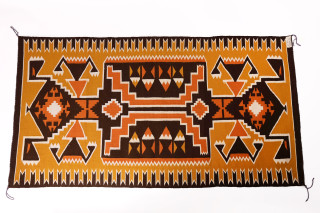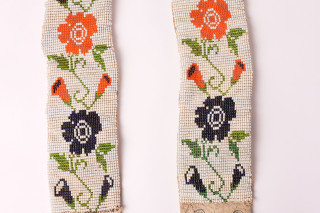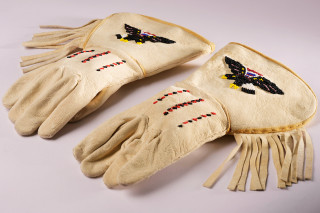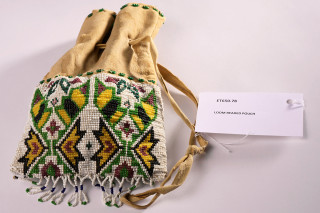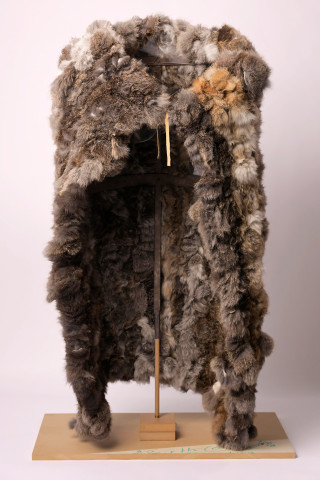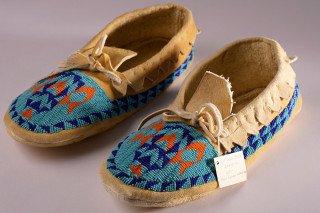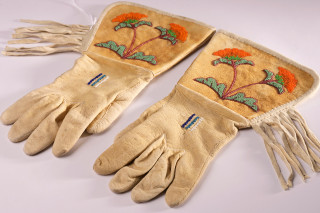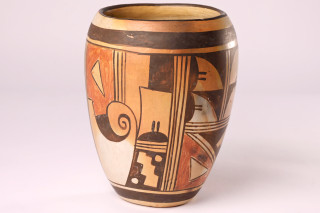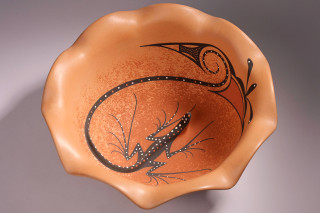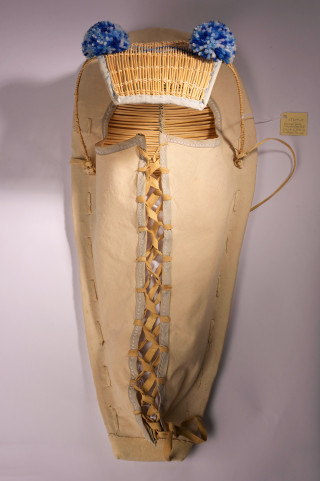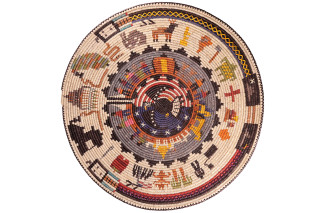Ethnography
Ethnography, a branch of anthropology, is the study of living cultures and their histories. Unlike archaeology and paleontology, which must piece together the past from only material remains, ethnography has the advantage of studying cultures not just from their material objects, but also through conversations with living people who can explain their cultures’ histories, beliefs, practices, and perspectives.
The Museum's Ethnographic Collection is composed primarily of objects produced by Indigenous groups from Western North America, with a special focus on cultural groups with contemporary and/or ancestral territory in the modern state of Utah – Goshute, Paiute, Shoshone, Ute, and Navajo (Diné), as well as many Puebloan tribes.
The earliest objects were collected in the 1870s, with perhaps the best-known objects being beaded regalia, moccasins, and Navajo baskets. The collection also includes textiles, clothing, masks, weapons, musical instruments, Kachinas, basketry, jewelry, and ceramics. But objects are not the only focus of our work – we continue to grow our collection of oral histories and interviews with Native peoples about their culturally-affiliated objects and cultures.
In the last 10 years, we have doubled our ethnographic collections thanks to donations and purchases from Indigenous artists. We are dedicated to ethically growing our collections while supporting Native communities. We work closely with the University of Utah Indigenous Advisory Committee, as well as with Tribal elders, artists, and subject area experts. All of our exhibits are produced in consultation with Native groups, who also provide guidance on the management of our collections.
Our ethnographic collections are available online for researchers and the general public to search and learn about these living cultures. Please note that a small number of objects are restricted due to Tribal beliefs and preferences.
Tribal Member Discount
We welcome and encourage members of Tribal Nations to visit NHMU. Guests from recognized tribes in the United States of America, including any children in their household, are eligible for free admission to NHMU. Please present a tribal enrollment card or tribal ID at the time of visit.
Tribal Member Collections Visit
Tribal members may also request a visit to view or research the Anthropology collections that are not presently on exhibit. To schedule a visit to this area, please email requests to the anthropology collections manager at least two weeks in advance.
Did you know...
We consult with tribal members to enrich what we know about the Ethnographic collections.

